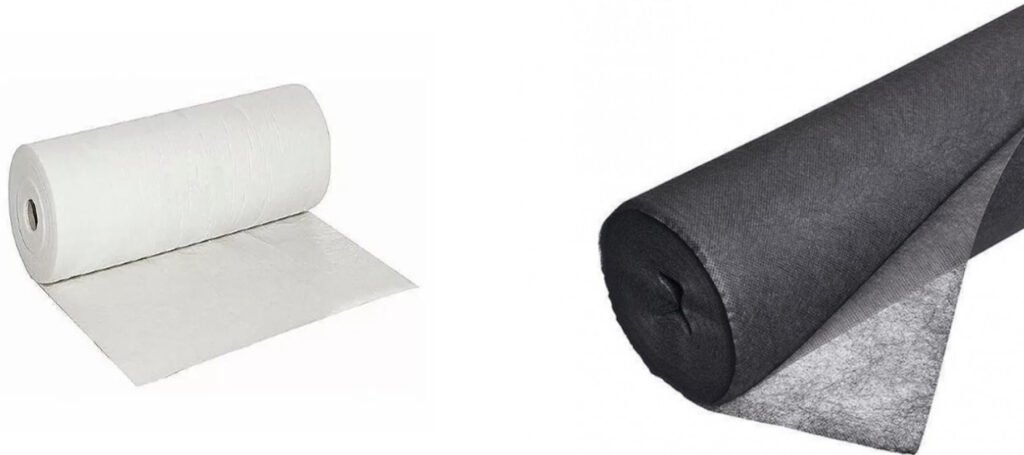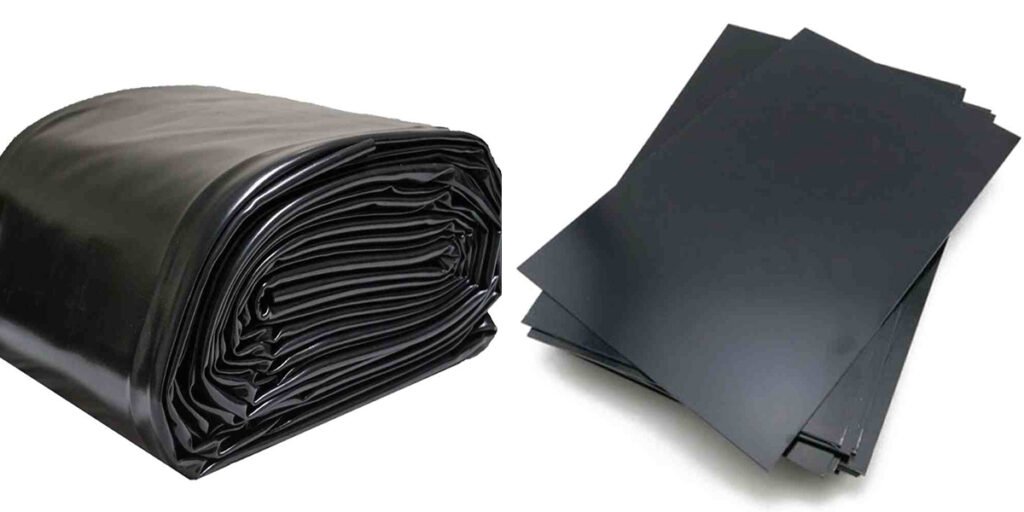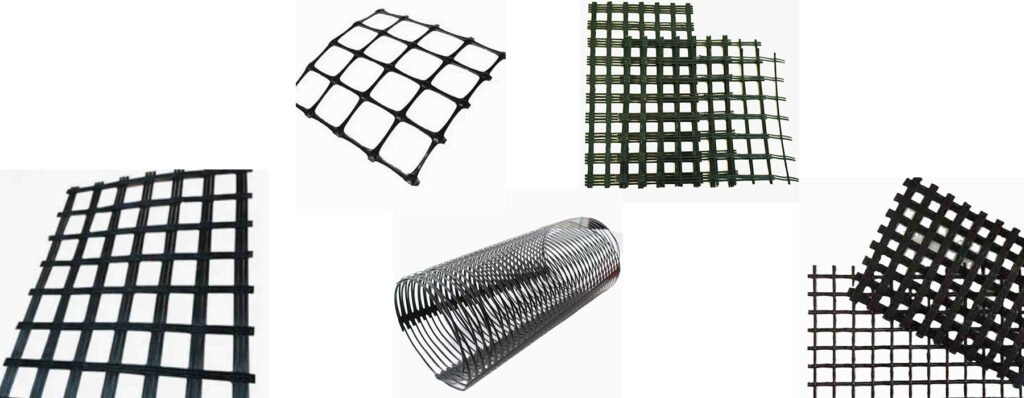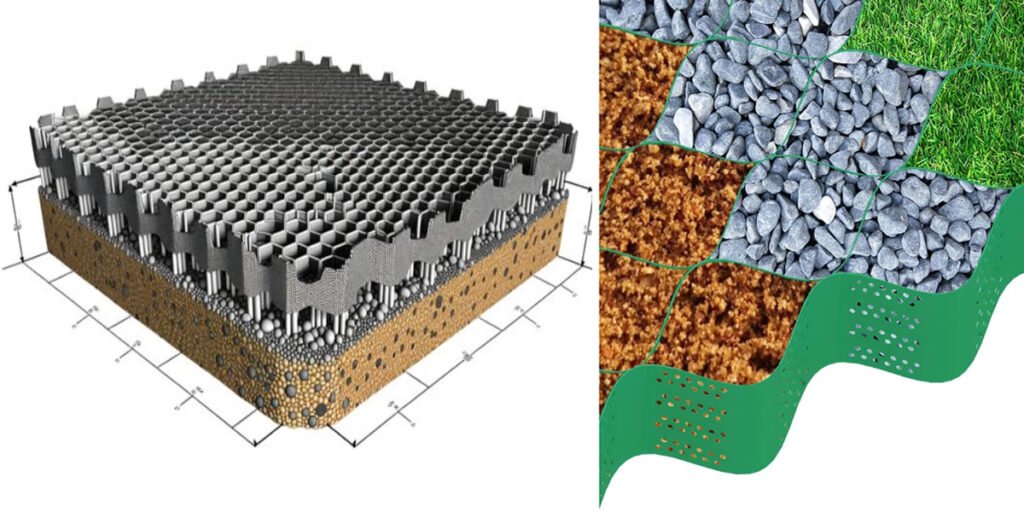What is geosynthetics ?
Geosynthetics materials refer to engineering materials used in civil engineering, especially those that interact with natural geological materials such as soil and rock. They are mainly used to improve or enhance the mechanical properties of soil, control water flow, prevent soil erosion, and improve the stability of structures. Geotechnical materials include many different types of materials, such as geotextiles, geomembranes, geogrids, geonets, geocells, etc. These materials are widely used in road construction, water conservancy projects, mining, environmental protection and other fields.
Definition and classification of geosynthetics materials
Geosynthetics materials can be divided into different types and classified by function, form and production process. Their applications cover a wide range of fields including foundation engineering, roads and bridges, river management, environmental protection engineering, etc. According to the application purpose and material characteristics, geosynthetics materials can be roughly divided into the following categories:
Geotextile: This type of material is a fabric made of synthetic fibers such as polyester (PET), polypropylene (PP), polyurethane, etc. through warp weaving, needle punching and other processes. Geotextile has excellent tensile strength, permeability and flexibility, and is widely used in soil reinforcement, drainage systems, anti-seepage protection, etc.

Geomembrane: Geomembrane is mainly made of materials such as polyethylene (PE), polyvinyl chloride (PVC), high-density polyethylene (HDPE), etc., with very low permeability, and is widely used in anti-seepage projects such as reservoirs and landfills.

Geogrid: This material is a mesh structure made of materials such as polyester, polypropylene or glass fiber, with excellent tensile strength, and is often used in road reinforcement, slope reinforcement and other projects.

Geocell: Geocell is made of materials such as polypropylene or high-density polyethylene. It has a three-dimensional honeycomb structure and can effectively enhance the stability of the soil. It is often used in slope reinforcement, lane stabilization and other projects.

Geosynthetics: Geosynthetics are composite materials composed of different geotechnical materials. They usually integrate multiple functions such as geotextiles, geomembranes and geogrids, and can provide more comprehensive soil reinforcement, anti-seepage and drainage functions.
Application fields of geosynthetics materials
- Geosynthetics materials play an important role in many engineering fields, especially in civil engineering, environmental protection, water conservancy projects and infrastructure construction. Their wide application is mainly reflected in the following fields:
- Road and bridge construction; geotechnical materials play a vital role in the construction of roads and bridges, especially in foundation reinforcement, pavement reinforcement and drainage system construction. For example, geogrids and geotextiles can effectively enhance the stability and durability of roads, reduce road settlement and extend the service life of roads.
- Road base reinforcement: geogrids and geotextiles can prevent road subgrade settlement and deformation and increase the bearing capacity of soil.
Prevent soil erosion: Use geomembranes and geotextiles on slippery and rugged roads to effectively prevent soil erosion and mudslides.
Strengthen pavement: Geogrids are used in combination with pavement structures to effectively prevent cracks in asphalt pavements and enhance the bearing capacity of pavements. - Water conservancy projects; geotechnical materials are used for anti-seepage, reinforcement, drainage and other functions. Geomembranes are often used for anti-seepage treatment of reservoirs, dams, channels and other projects to prevent water leakage. Geotextiles and geonets are often used for the stability of reservoir slopes, protection of river channels and construction of drainage systems.
- Anti-seepage of reservoirs and dams: Geomembranes are widely used in anti-seepage treatment of structures such as reservoirs and dams due to their excellent waterproof performance.
- River protection: Geotextiles and geonets are used for slope protection of rivers and dams to prevent water from eroding the soil.
- Water body protection: Geosynthetics also play an important role in water body protection projects such as wetland restoration and tidal flat protection.
- Landfill construction; geotechnical materials are used for anti-seepage, isolation, and strengthening of soil structures. HDPE geomembranes and geotextiles are often used at the bottom and side walls of landfills to prevent garbage from infiltrating and polluting groundwater.
- Anti-seepage isolation: HDPE geomembranes have extremely low permeability and are widely used for anti-seepage at the bottom and side walls of landfills.
Drainage system: By setting up geonets and geotextiles in landfills, effective drainage of landfill leachate can be achieved to avoid groundwater pollution. - Mining: In the mining of metal mines and coal mines, geotechnical materials are used for mine protection, foundation reinforcement, anti-seepage, etc. Geotechnical materials can effectively improve the environment of mines and reduce geological disasters in mining.
- Mining foundation reinforcement: The foundation of the mining area is reinforced by materials such as geogrids and geotextiles to prevent landslides, collapses, etc.
Tailings treatment: Geomembranes are used in tailings ponds for anti-seepage treatment to prevent harmful substances from seeping into groundwater sources. - Environmental protection and restoration: Geotechnical materials play an important role in environmental protection and restoration. Geotextiles and geomembranes are often used in pollution control, wetland restoration and ecological restoration.
- Pollution control: Geomembranes can be used to isolate contaminated soil and prevent the spread of harmful substances.
Wetland restoration: Geotextiles and geogrids are often used in wetland restoration to enhance soil and water conservation. - Building and infrastructure: Geotechnical materials are used to strengthen the foundation of buildings, enhance the stability of foundations, and design for anti-settlement.
- Building foundation reinforcement: The combination of geogrids and geotextiles can enhance the stability of building foundations and avoid settlement.
Tunnel and subway engineering: geosynthetics materials are used in the waterproof layer of tunnels to reduce water leakage.
Geotechnical materials are indispensable and important materials in civil engineering and environmental engineering. They are of various types and widely used. With the advancement of science and technology, geotechnical materials have been continuously improved in performance and function, gradually meeting the higher requirements for safety, stability and sustainability in modern engineering construction. In the future, with the growing demand for infrastructure construction and environmental protection, the application of geotechnical materials will be further expanded to provide more effective solutions for civil engineering. For more product information or engineering support, please feel free to contact our professional team! We are committed to providing you with the best quality geotechnical material solutions to help your engineering projects succeed.
